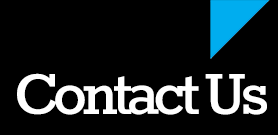
A spinal disc is technically called an intervertebral disc as they sit between two vertebrae in your spine. Their main role is to act as a shock absorber for the spine. They are flat on the top and bottom and are attached firmly to the vertebrae above and below by lots of fibres. These fibres are very strong and in cadaver studies, they have found that when placed under load, the vertebral bodies will break before the fibres holding the disc in place do. There are also numerous ligaments around the area holding things together. This shows why a disc cannot slip anywhere, so the term ‘slipped disc’ is definitely not accurate.
The disc itself is composed to 2 parts
- They have a tough outer fibrous layers called the Annulus Fibrosus.
- They have a jelly-like core called the nucleus pulposis. It is the nucleus pulposis that gives the disc their shock absorbing nature. As we age, the gel like centre hardens and becomes less springy.
How a disc injury occurs
Over time or through repeated poor lifting and movement, cracks can appear in the outer fibres. This allows the gel like nucleus to migrate towards the edge of the disc. As I said earlier, only the outer third of the Annulus Fibrosus has nerve fibres, so this migration of the nucleus can occur for a while without you even knowing about it. Once these fibres are stimulated, you can sense pain. These nerve fibres can then start to grow towards the middle of disc so therefore less and less trauma is required before the pain will start again. As this nucleus material moves towards the edge of the disc, a bulge can form. This bulge can irritate structures in the area such as spinal nerves and in bad cases the spinal cord itself. Occasionally, some of the disc material may actually push all the way through the disc and begin to float around in the spinal canal. This is called a disc sequestration. This is definitely not a good thing.
Where are they most likely to occur and who is more at risk?
Disc injuries are most common in the lumbar spine in the lower back, but do also occur in the neck and upper back. They are most common in men and women 30-50 years old. It can also occur in teenagers and this is more common these days with the poor posture a lot of kids have. A true disc bulge is unlikely to occur in older people due to the hardening of the disc material described above
What causes a disc injury?
Disc injuries can occur for a number of reasons:
- A violent injury or trauma can damage a disc.
- The most common cause is a build up over time with repetitive poor motions and poor posture (especially flexing though the lower back and not the hips). These movements include sitting in poor posture, poor lifting techniques, and repetitive sports injuries etc.
- A poor functioning spine with lack of muscular support and stability.
- Sometimes there can be no apparent cause at all.
Degenerative disc disease
Sometimes the disc itself can be a cause of pain. As we age the inner gel like substance hardens and loses some of its shock absorbing properties. The outer part of the disc can get small tears which can cause pain. The degenerative process is also associated with bone spurs called osteophytes from the vertebrae. These can also irritate surrounding structures.
Symptoms of a disc injury
We have learnt so far what the intervertebral discs are and how injuries can occur. This leads us to the important question, what are the symptoms of a disc injury? Put simply, there can be 3 main types of symptoms of a disc injury.
- There may be no pain at all. As I mentioned earlier, lots of people have disc injuries with no symptoms.
- There can be Localized pain and restricted movement. This pain can be acute or chronic.
- There can be nerve pain. If a nerve is affected you can get radiating nerve pain in to the arms or legs. In the lower back this often causes pain that travels along the Sciatic nerve. Read my blog post on Sciatica to explain this further.
Hopefully this information has given you some clarity on what a disc is, how it gets injured and what symptoms you can get. In part 2 of this blog series I will look at the diagnosis of a disc injury, the treatment options and I will give you some useful tips on helping yourself and hopefully some ways of preventing disc injuries in the first place. Stay tuned. If you have any questions, please feel free to contact me here.




 RSS Feed
RSS Feed


